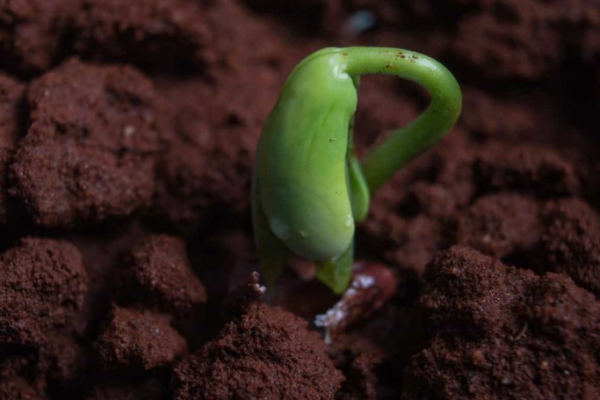Everything You Need to Know About Treating Vegetable Seeds for Optimal Growth
Methods of Vegetable Seed Treatment: A Detailed Guide for Beginners

Good quality vegetable seeds are the most important input in agriculture. Seed treatment, in broad terms, is the application of biological, physical, and chemical agents and techniques to seed that protect seeds and plants and improve the establishment of healthy crops. However, if not properly managed, diseases and pests affecting crops can have devastating consequences in agricultural and horticultural production. Let’s check out the methods of vegetable seed treatment below.
What is the meaning of seed treatment?
- Seed treatments are biological, physical, and chemical agents and techniques applied to seeds to protect and improve healthy crops’ establishment.
- It refers to the fungicide, insecticide application, or a combination of both to disinfect and sterilize them from seed-borne or soil-borne pathogenic organisms and storage pests. It also refers to the exposure of seeds to solar energy, immersion in conditioned water, etc.
- It helps improve crop protection, resulting in the excellent establishment of healthy and strong plants and better yields. The benefit of seed treatment is to increase germination and ensure uniform seedling emergence. In addition, it protects seeds and plants from early season diseases and insects, improving crop growth and development.
- Overall, seed treatment improves plant population and thus higher productivity. According to an estimate, 80% of seeds in our country are not treated, whereas, in developed countries, 100% of seed treatment is practiced. Seed treatment also protects emerging plants from sucking insects.
What is the advantage of seed treatment?
Seed treatment protects seeds from pests and diseases – One of the most important benefits of seed treatment is the additional protection it provides to the seeds. During the early stages of development, it is important that the seeds are not susceptible to diseases or pests, or they will fail to germinate. Untreated seeds also have the potential to spread plant diseases that can be prevented if treated to improve their immunity.
Seed treatment controls soil pests – Seed treatment benefits the seeds and the soil. It can control soil pests and add essential nutrients and valuable microorganisms to help plant growth.
Seed treatment improves germination – Seed germination depends on various factors, but seed treatment can improve the chances of germination. Since the seed treatment is applied uniformly to all the seeds, it can promote uniform crop germination. The seed treatment formulations are specific and safe for crops and were designed to avoid any possible harm such as delayed germination or irregular emergence and phytotoxic effect compared to other formulations unsuitable for field use.
How does seed treatment work?
- Seed treatment is a biological organism, colorant, nutrient, or chemical applied directly to the seed that helps control any pests that attack the seeds, and plants, thereby improving overall crop performance.
- Quality seed is an important crop production input. Seed treatment is a simple method of managing pest incidence in crop production. In addition, it serves purposes such as ease of sowing, breaking dormancy, hardening the seed, increasing nitrogen fixation, and solubilizing phosphorus.
- Maintaining seed quality depends on many environmental factors: moisture, temperature, humidity, and storage conditions. However, even if these factors are properly accounted for, seed quality can still be destroyed by some seed-borne diseases, insects, and other pests.
Different methods of vegetable seed treatment
- Dry treatment: Mixing the seed with pesticides or nutrients in powder form.
- Wet treatment: Soak seeds in liquid form of pesticide/nutrient solution.
- Slurry treatment: Seeds/plants are dipped in slurry. Treatment of seed with liquids or liquid solutions. The slurry is prepared by mixing chemicals with water. The required amount of chemical is automatically added to the specified quantity of seed before bagging. Dipping seeds/plants in slurry, e.g., rice seeds are dipped in phosphate slurry.
- Seed dressing: The most common method of seed treatment. The seed is either prepared with a dry formulation or wet treated with a slurry or liquid formulation. The application of dressing is both farm and industrial.
- Dust treatment: Seed treatment with the powdered form of fungicides.
- Pelleting: Pelleting is a deterrent against soil organisms, insects, birds, and rodents.
- Seed dipping: It involves immersing seeds or propagules in a chemical solution for a specified period before sowing. For example- seed dipping Dithan M45 controls potato late blight.
What are the most effective seed treatments?
There are many commercial seed treatments available today. Depending on the needs of specific crops, growers may choose a combination of seed treatments with chemical or biological agents. There are different types of seed treatments.
Fungicides – Seeds are particularly vulnerable to fungi in the early stages of development, and some fungi may be difficult to combat on their own. Fungicide seed treatments can protect them and prevent fungal diseases.
Insecticides – Pests are another concern that farmers must consider when looking at the early growth stages. Many insects target seeds and damage them before they germinate. Insecticide seed treatments can protect against such pests with the added benefit of lower concentrations of chemicals than pesticides applied to fully grown crops.
Microbial Inoculants – Microbial inoculants are seed treatment products that can stimulate plant growth, promote soil biodiversity, and even address specific problems such as nitrogen fixation in legumes. It also delivers beneficial microorganisms directly to the area where the plant interacts with the soil, encouraging growth.
Plant Growth Regulators – With plant growth regulators, seeds get extra support for germination and better tolerance to stress during critical early stages of growth. This seed treatment for germination is helpful when the seeds have to germinate in tough conditions.
Fertilizers – Fertilizer seed treatments are another type of seed treatment that helps plants grow. Seed treatment with bio-fertilizers can increase fertilization efficiency or provide soil micronutrients to enrich the seed growth environment.
Why is seed treatment recommended in vegetable crops?
Seed treatment with Trichoderma or Pseudomonas protects crops from disease-causing microorganisms. Soak the cloth in warm water for 30 minutes or overnight before sowing. It will help speed up germination, faster growth, and healthier plants. Objectives of seed treatment are:
- Its main role is to protect the seeds from seed-borne diseases and insect attacks.
- Reviving a seed that has been dormant for a long time.
- Drought tolerance is encouraged.
- Early emergence is used to increase the seed germination percentage.
What vegetable seeds should be soaked before planting?
A short list of seeds that like soaking is Peas, Beans, Pumpkin and other Winter Squash, Chard, Beets, Fava Beans, and Cucumbers. Other media to large vegetable seeds with thick coats benefit from soaking. Soaking seeds give your plants a jump start in their life. Water both softens the seed coat and hydrates the interior of the seed. Once soaked, the seeds and the plants inside them use the moisture to grow and produce new growth.
Seeds are made up of baby plant parts surrounded by a seed coat. Although the internal parts of a monocot and dicot seed differ, the seed coat protects the baby plant until it is time to germinate. They contain the parts that grow and become food for the first leaves and stems of the plant, as well as the initial growth. By soaking the vegetable seeds, you are telling the seed that it is the right time to germinate and become a plant.
Which fungicide is used for vegetable seed treatment?
One of the most widely used systemic fungicides for managing fungal diseases is carbendazim, a methyl benzimidazole carbamate (MBC) group of fungicides. Conditions under which seed treatment is necessary;
1) Injured seeds: Any break in the seed coat provides the best opportunity for the fungus to enter the seed and kill it or awaken the resulting seed. The mechanical injury occurs during the process of combining and threshing operations or by falling from excessive heights. They can also be damaged by weather or improper storage.
2) Diseased seed: Seed can become infected with disease organisms even at harvest or during processing if processed on contaminated machinery or stored in contaminated containers or warehouses.
3) Unfavorable soil conditions: Seeds are sometimes planted in unfavorable conditions such as cold and wet or very dry soil. Such unfavorable soil conditions may be favorable for the growth and development of certain fungal spores that enable them to attack and damage the seeds.
4) Disease-free seeds: Seeds are always infected with disease organisms with no economic and severe economic consequences. Seed treatment provides good insurance against soil-borne diseases organisms and thus protects the weak seeds so that they can germinate and produce seedlings.
How do you treat seeds before planting?
Keep the seeds at a high temperature (40-42°C) for 1-2 days before sowing.
- Seed priming – Soak the seeds for 4-8 hours and dry again before sowing. The seeds should be sown within 1-2 days after priming.
- Pre-germination – Soak the seeds in water for 12-24 hours or until small shoots appear at the end of the seed.
Treating vegetable seeds before planting can help control seed-borne diseases. Control of these diseases is essential to prevent a reduction in crop yield. Suppliers or commercial nurseries treat some seeds before planting for transplanted crops or sale to growers for direct-sown crops. Vegetable seed can be treated to kill disease-causing organisms in or on the seed and then protect it when planted. Hot water treatment can kill many bacteria, fungi, and viruses in or on the seeds of many crops.
Posted
2 years ago
No comments yet! Why don't you be the first?










Add a comment